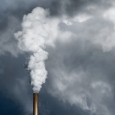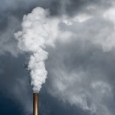Clean Air Act of 1977
The 1977 Clean Air Act amendments addressed many plants originally grandfathered under the 1970 CAA by instituting New Source Review (NSR). Any significant modifications resulting in additional emissions to existing plants would now trigger an NSR and bring the plant under CAA regulation. Plant owners would either have to install pollution abatement equipment or abate at another facility under their ownership. Additionally, the 1977 amendments instituted Prevention of Significant Deterioration (PSD) rules. Three classifications were created under the PSD rules. Class I: very little additional pollution is allowed; Class II: moderate pollution is allowed; Class III: pollution approaching but not bypassing NAAQS is allowed. Federal lands and national parks were automatically designated Class 1 regions.
Commentary
Cry Wolf Quotes
We believe the way in which the law is currently administered conflicts with other important national goals -- the need to increase productivity levels, to create new jobs and to spur development of domestic energy sources.
Additional money spent on secondary cleanup standards is not going to make that much difference in air quality, but it will hurt the American steel industry….In short, if it did not have to meet environmental requirements, the steel industry would have the capital to increase its annual shipments from 92 million tons in 1981 to 105 million tons in 1990….The need to meet future environmental requirements will reduce this expansion to 96 million tons.
At its worst, the Clean Air Act speaks of the potential wholesale shutdown of industrial facilities should a state not be able to attain the standards by set dates -- 1982 and 1987. At its best, the act will require the imposition of new and expensive technology and will severely limit the location of new industry in major metropolitan areas.
[Regulations in the Clean air Act] could effectively ban important new large-scale construction in the future.
Evidence
-
Blind Spot: The Big Three's Attack on the Global Warming Treaty
eleased during the controversy over the Kyoto Treaty, this study is a serious policy paper, exploring the intersections between transit policy and global warming. It fairly establishes the Big Three have as long history of stubborn obstructionism. (They don't like anyone telling them what to do.)
-
EPA: “Benefits and Costs of the Clean Air Act: Second Prospective Study—1990-2020”
Clean Air Act benefits total more than $2 trillion.
-
Jobs vs. The Environment: An Industry-Level Study
Four industries that operate under intense environmental regulatory scrutiny, but haven't lost jobs as a result.
-
Benefits and Costs of the Clean Air Act - 1990 to 2010
The monetizable benefits of the Clean Air Act are four times greater than the costs.




